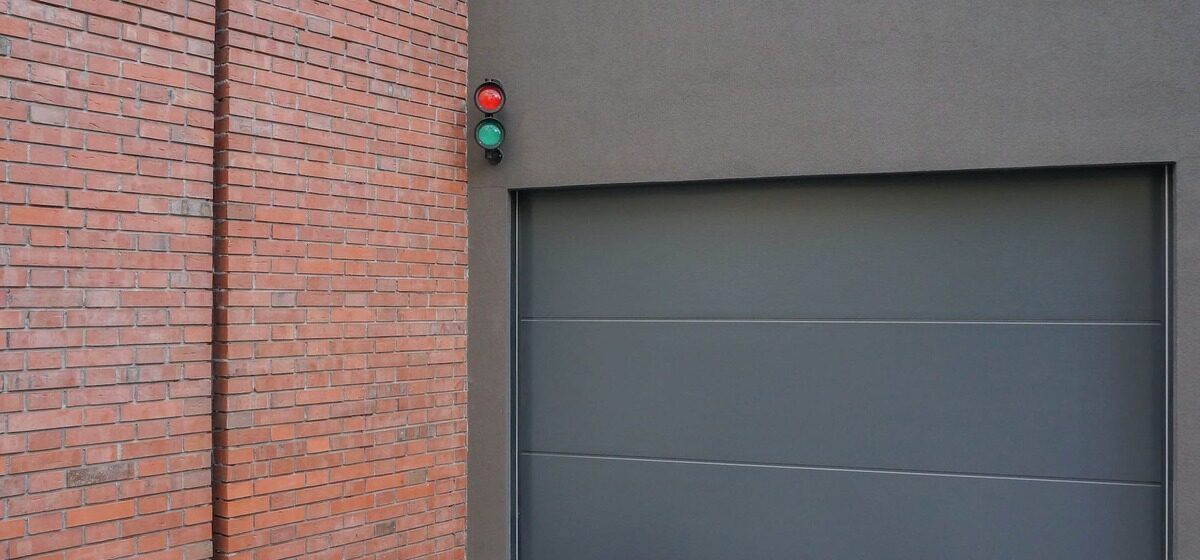In the ever-evolving landscape of home automation, the integration of garage door openers with smart home systems has become a game-changer for homeowners seeking enhanced security, convenience, and energy efficiency. This article explores the seamless marriage of garage door openers with smart home technologies, providing insights into the types of systems available, steps for integration, and the future of this evolving trend.
As we step into an era where technology intertwines seamlessly with our daily lives, the connectivity of garage door openers with smart home systems takes center stage. This integration goes beyond mere convenience, offering a myriad of benefits that cater to the modern homeowner’s desire for security, ease of use, and energy conservation.

Importance of Integrating Garage Door Openers with Smart Home Systems
- Enhanced Security Features. One of the primary motivations behind integrating garage door openers with smart home systems is the bolstering of security measures. Smart home systems, equipped with advanced sensors and real-time monitoring, provide homeowners with instant alerts and control over their garage doors, mitigating the risk of unauthorized access.
- Convenience and Ease of Use. Imagine a world where your garage door recognizes your car approaching and opens automatically. This level of convenience is achievable through smart home integration. With the tap of a smartphone screen or a voice command to a virtual assistant, homeowners can effortlessly control their garage doors, eliminating the need for physical remotes.
- Increased Energy Efficiency. Smart home systems offer more than just security and convenience; they contribute to energy efficiency as well. Integration allows users to schedule door openings and closings, optimizing energy consumption by minimizing unnecessary operation. This not only benefits the environment but also results in cost savings for homeowners.
Types of Smart Home Systems Compatible with Garage Door Openers
- Wi-Fi-enabled Systems. Wi-Fi-enabled smart home systems provide seamless connectivity, allowing homeowners to control their garage doors remotely through dedicated apps. This type of integration offers real-time status updates and ensures a stable connection for prompt responses to commands.
- Bluetooth Connectivity. For those who prefer short-range connectivity with minimal energy consumption, Bluetooth-enabled systems are a popular choice. These systems offer reliable integration, especially suitable for smaller properties where a strong Wi-Fi signal might be unnecessary.
- Integration with Virtual Assistants. The integration of garage door openers with virtual assistants like Amazon’s Alexa or Google Assistant adds a layer of sophistication. Homeowners can simply voice their commands, making the operation of garage doors hands-free and effortless.
How to Choose the Right Smart Home System for Your Garage Door Opener
- Compatibility Considerations. Before diving into the world of smart home integration, it’s crucial to ensure compatibility between the chosen system and the existing garage door opener. Manufacturers often provide compatibility lists, making it easier for users to make informed decisions.
- User-friendly Interfaces. Opt for systems with intuitive apps and control panels, ensuring that all members of the household, regardless of tech-savviness, can operate the garage door effortlessly.
- Customization Options. Every homeowner’s needs are unique. Choosing a system that offers customization options allows users to tailor the integration to their preferences, whether it’s setting specific schedules, creating automation scenarios, or personalizing security settings.
Step-by-Step Guide to Integrating Garage Door Openers with Smart Home Systems
Setting Up the Smart Home System
- Check Compatibility: Verify that your chosen smart home system is compatible with your garage door opener.
- Create an Account: Register on the app, providing necessary details.
- Connect to Wi-Fi/Bluetooth: Follow the app’s instructions to connect the system to your home network.
Connecting the Garage Door Opener
- Power Off: Ensure the garage door opener is powered off.
- Locate Integration Ports: Identify the integration ports on the opener.
- Connect Cables: Follow the system’s instructions to connect the cables securely.
- Power On: Turn on the garage door opener.
Testing the Integration
- Operate Remotely: Use the app or voice commands to test remote operation.
- Check Sensors: Verify that sensors detect changes in the garage door’s status.
- Troubleshoot if Necessary: Address any connectivity issues promptly.

Common Challenges and Solutions
Connectivity Issues
- If faced with connectivity issues, consider:
- Rebooting Devices: Power cycle both the smart home system and the garage door opener.
- Checking Wi-Fi/Bluetooth Signals: Ensure strong signals for reliable connectivity.
Security Concerns
- To address security concerns:
- Regular Password Updates: Change passwords regularly for enhanced security.
- Enable Two-Factor Authentication: Add an extra layer of protection to your smart home system.
Troubleshooting Tips
For general troubleshooting:
- Consult User Manual: Refer to the user manual for step-by-step troubleshooting guides.
- Contact Customer Support: Reach out to the manufacturer’s customer support for assistance.
Real-Life Benefits and Success Stories
User Experiences with Integrated Garage Door Openers
Homeowners share their experiences:
- Increased Peace of Mind: Knowing the garage is secure.
- Convenience in Everyday Life: Effortless control of garage doors.
- Improved Home Automation Scenarios
Integrated systems contribute to:
- Synchronized Home Automation: Coordinated operation with other smart devices.
- Energy Savings: Optimal scheduling for energy efficiency.
- Cost-Effective Solutions
The long-term benefits outweigh initial costs:
- Reduced Energy Bills: Efficient operation leads to cost savings.
- Enhanced Property Value: Modern features increase home value.
Future Trends in Garage Door Opener Connectivity
Advancements in Technology. Anticipated advancements include:
- AI Integration: Smarter decision-making for optimal garage door operation.
- Enhanced Security Features: Continued evolution of security protocols.
- Integration with Emerging Smart Home Devices
Garage door openers will integrate seamlessly with:
- Smart Cameras: Enhanced surveillance features.
- IoT Devices: Greater connectivity and automation possibilities.
- Potential Innovations on the Horizon
Expect innovations such as:
- Biometric Integration: Fingerprint or facial recognition for added security.
- Predictive Maintenance: Proactive identification and resolution of potential issues.
Historical Perspective
Reflecting on the evolution:
- Manual Operations: Traditional garage door openers.
- Remote Control Advancements: The introduction of remote controls.
- Technological Advancements Over the Years
The journey includes:
- Sensor Technology: Enhanced safety features.
- Integration with Smart Home Systems: A pivotal moment in garage door opener history.
- Impact on Homeowners
The transition has led to:
- Improved Security: A key concern for homeowners.
- Transformed Daily Living: Convenience as a driving force for adoption.
Expert Opinions and Insights
Interviews with Industry Experts
Experts weigh in on:
- Current Trends: The state of garage door opener connectivity.
- Recommendations: Best practices for homeowners.
- Recommendations for Seamless Integration
Experts suggest:
- Regular Updates: Keeping systems up-to-date for optimal performance.
- Integration Planning: Considering the broader smart home ecosystem.
- Predictions for the Future
Experts predict:
- Widespread Adoption: Garage door opener connectivity as a standard feature.
- Integration with Smart Cities: A broader scope beyond individual homes.
DIY Projects: Enhancing Garage Door Opener Connectivity
Customization Options for Tech-Savvy Users
DIY enthusiasts can:
- Explore Open-Source Platforms: Customize integrations based on personal preferences.
- Experiment with Coding: Tailor smart home interactions according to individual needs.
Budget-Friendly Upgrades
- Cost-effective upgrades include: Sensor Add-ons: Enhancing existing garage door opener capabilities.
- Open-Source Software: Affordable alternatives for tech-savvy users.
Safety Precautions for DIY Installations
- Adhering to Guidelines: Following manufacturer instructions.
- Professional Consultation: Seeking advice for complex DIY projects.
Tips for Maintaining Garage Door Opener Connectivity
Regular Updates and Software Maintenance
Ensure longevity by:
- Frequent System Updates: Keeping software current.
- Scheduled Maintenance: Periodic checks for optimal performance.
- Troubleshooting Common Issues
Be prepared to:
- Identify Error Codes: Refer to the user manual for troubleshooting guidance.
- Professional Assistance: Seeking help for complex issues.
- Professional Maintenance Services
Consider:
- Annual Inspections: Professional checks for wear and tear.
- Upgrading Components: Keeping up with technological advancements.
In conclusion, the integration of garage door openers with smart home systems marks a significant stride towards a more secure, convenient, and energy-efficient future. As we witness the evolution from manual operations to sophisticated smart technologies, the benefits for homeowners are undeniable. Embracing this trend not only enhances daily living but also positions homes at the forefront of technological advancement.





